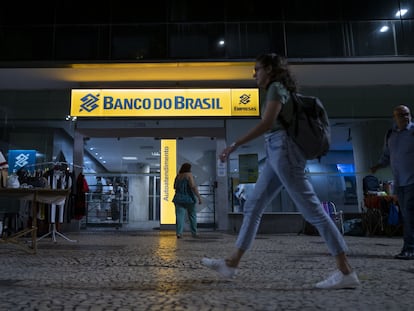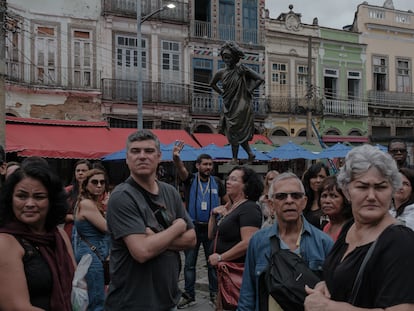It’s official: Brazil is now more mixed than white
The latest census confirms — after 150 years — a change in the racial majority in Latin America’s biggest country. This shift is due to demographic causes, affirmative action policies and greater consciousness
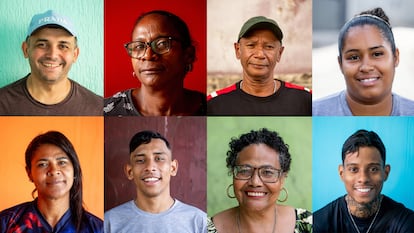

The first time he noticed something strange was when he was a child in school, the typical Brazilian private school where the majority of the pupils are white. For his peers, a pinkish, beige marker was what they referred to as “skin color.” But his skin color was totally different: “I would grab the burnt yellow pencil — a kind of mustard — and put it against my forearm, to show them what I was talking about,” explains Gleyson Borges.
When he turned 31, he defined himself as Black, but this wasn’t always the case. A graphic designer who signs his artwork with the name A Coisa Ficou Preta (“the thing has turned Black”), he draws attention to the fact that, as a child, he specifically chose the part of his skin that was the lightest when referring to his color. “I wanted to get as close as I could to the standard [of beauty].”
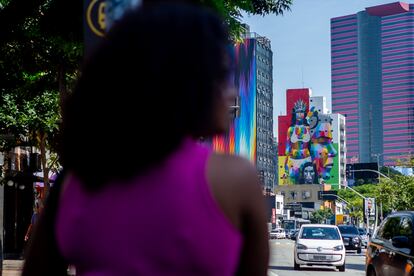
Like millions of Brazilians, Borges discovered that he was Black through a long process that is simultaneously personal and collective. This social transformation accelerated when he saw through the prevailing myth in Brazil: that the country, post-slavery, is some sort of paradise of racial harmony, without discrimination. “I was always Black, but knowing it was something that happened in my adult life,” the artist explains, in a video call with EL PAÍS from his house in Maceió, the capital and the largest city of the coastal Brazilian state of Alagoas.
At the end of December, the latest census data confirmed a significant chance that will likely shape Brazilian society in the coming decades. For the first time in a century and a half, those who define themselves as mestizos, or mixed-race (45% of the population, or 92 million people), have surpassed whites (43%, 88 million) as the largest racial group. This represents a profound transformation in the way Brazilians define themselves in ethnic-racial terms. In the census form, every citizen chooses from the official boxes: mestizo (or pardo, in Portuguese), white, Black (preto), Indigenous and Asian.
Lilia Schwarcz, a 66-year-old anthropologist — who defines herself as white — is one of the renowned Brazilians who has studied racial matters for decades. “The truth is that mestizos were always the majority. I believe that the current classification reveals [more self-awareness] on the part of a society that has long been under the influence of whitewashing. [Many who once] defined themselves as white now define themselves as mestizo,” she explains. For decades, those who were in limbo would mark the box that read “white,” which, historically, was associated with the beautiful, with the positive… as opposed to everything negative that still often gets associated with being Black or brown. On formal records, many Brazilian parents had the tendency to lighten their babies.
Eliazete de Souza, 65-years-old. “I never considered myself to be any color other than Black, neither white nor mixed race”
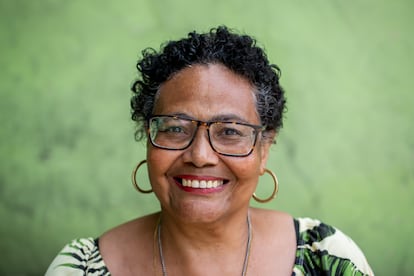
Schwarcz attributes this positive change in social perception to the struggle of Black activism, the policies of affirmative action, racial quota systems and the rise of Afro-Brazilian studies, among other things. “All of this generated a different understanding on the part of the population,” Schwarcz explains, in an email exchange with EL PAÍS. She emphasizes that “the authorities are going to have to react and organize themselves based on this mestizo majority, in terms of healthcare, social [policies] and even institutional representation.”
The change has accelerated over the last two decades thanks to multiple policies promoted by successive Workers’ Party administrations (2002-2016, 2023-present). And the Black advocacy movement was crucial to getting the state to adopt its definition of a Black person as being someone with African descent — that is, to include mestizos with some African ancestry.
The implementation of quotas — which began about a decade ago — touched a nerve. Numerous white families complained when many more poor, mixed-race and Black students entered university. They felt that their children were being discriminated against. On purpose or not, outraged parents ignored the historical injustices that motivated this policy.
Five million slaves were brutally and forcibly brought to the Portuguese Empire in the Americas from Africa over the course of 350 years, laying the foundations of what would become Brazil. They labored in horrific conditions on sugar plantations or in gold mines. In no other country in America was slavery so long-lasting. Abolished in 1888 — more than 20 years after the practice officially ended in the United States — the authorities subsequently recruited 3.5 million European immigrants to replace free labor and to whiten the national race. The dream of the eugenicists —who wanted to perfect the human species with their racist theories — was that no trace of African blood would remain. As we can see today, this vision certainly hasn’t been fulfilled.
Carlos Magno Pires, 60-years-old. “I’ve always considered myself to be mestizo. That’s what my birth certificate says”
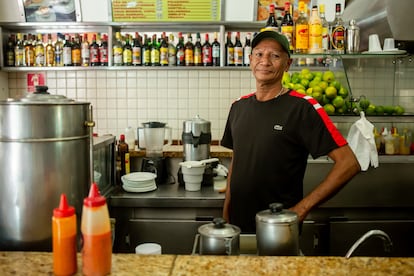
At the beginning of the 20th century, local elites calculated that, with an influx of Italians, Germans, Spaniards and Syrians, in just 10 generations or so, Brazil would be a white country. However, when you look at Brazil today, few nations have a larger palette of skin tones (as the cosmetics multinational L’Oréal knows well, always attentive to its clientele). Brazil has “eight types of hair and 55 skin tones, among the 60 cataloged by our scientists around the world,” explained the head of its Brazilian subsidiary, Marcelo Zimet, to Veja magazine.
There are so many tones that it’s not uncommon for doubt to arise when filling in the racial portion of the census. To Brazilians who complain that they were never educated on this issue, anti-racist activists respond: “You don’t know if you’re Black or white? Ask the police: they’re quite clear about it.” And, upon suspicion of abuse of racial quotas, the candidate in question can be brought before a commission that decides whether he or she meets the specified requirements of the box they’ve checked.
All the way back when the first census was circulated — in 1872 — Brazilians were already being asked about their skin color or race. The majority declared themselves to be mestizo, but there were also far more whites (as a percentage of the total population) than there are today.
Marta Antunes — from the Brazilian Institute of Geography and Statistics (IBGE) — defines herself as white. She explains that the institution cannot confirm to what extent mestizos make up the majority due to both demographic and anthropological reasons. She points to three factors specifically: demographics (such as an increase in interracial couples), changes in fertility patterns (couples having fewer children later on in life) and the way in which society discusses and thinks about ethnicity.
Until a decade ago, she recalls, “many didn’t stop to think about [race].” In the 1940s, the “yellow” category (Asian) was created, in the wake of Japanese immigration. In the 1990s, the Indigenous community was formalized on government documents. She also adds that the IBGE has perfected its methods with explanatory videos, or by approaching Indigenous people who live beyond their traditional lands —a group in which “there was once a lot of confusion between ethnicity and race.” Thanks to these adjustments, the Indigenous population has doubled (from 0.4% to 0.8%) over the course of a decade.
Jucelia da Silva, 32-years-old. “I was always Black, but in the registry, it says that I’m mestiza. I don’t know why. The same thing happened with my brothers and my children”
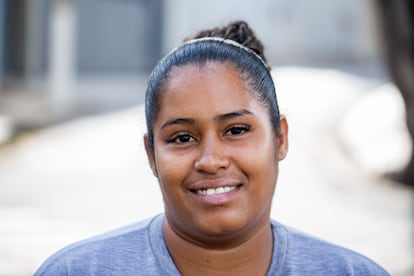
It’s also not uncommon to change categories over the course of a lifetime, as demonstrated by the thousands of Brazilian politicians who whiten or darken themselves between one election and another. Both the iconic singer Caetano Veloso and his colleague Gilberto Gil considered themselves to be mestizo in the 1970s, as the former explains in his autobiography, even though Veloso appears white at first glance, while Gil appears Black. And, in 2010, Neymar told the newspaper Estadão that he has never experienced racism “on or off the field. Because I’m not Black, you know?” He also revealed that, every 20 days, he straightens his hair. Being harassed for having “frizzy hair” has long been deployed as a racial insult.
Brazil turned being mixed-race into a sign of national identity. And it took advantage of the fact that there were no racial segregation laws in the country (unlike in the United States under Jim Crow) in an attempt to present itself to the world as a tropical paradise, sans discrimination or racial tensions. This was the myth of “racial democracy.”
The 73-year-old philosopher Sueli Carneiro — a Black woman, one of the great intellectuals of contemporary Brazil — noted in an interview from 2022 that the notion of racial democracy was “a form of sophisticated and perverse racism, because it produced a distorted consciousness for all those involved in racial relations.” The idea that there was no racism permeated society, although statistics denied the fantasy time and again. Black and mixed-race Brazilians live shorter and poorer lives, while they get sick far more than their white compatriots.
In 1900, 1920 and 1970, the census didn’t ask about race or color. But in 1976, the authorities raised it openly, without boxes. The answers were 136 skin tones, including “very white,” “very dark,” “tanned brunette,” “cinnamon-colored brunette,” “bordering on white,” or “almost Black.” There were also terms such as mulata, which have been banished due to their discriminatory connotations.
Borges — known as A Coisa Ficou Preta — doesn’t precisely remember the first time he was asked about his color or race. He believes that it was in some census. “It was a shock.” He was assailed by doubt: “I knew [the answer] wasn’t white, but I didn’t know if it was Black, which is a reddish color. And I had no conception of being a mestizo. The truth is, I don’t remember what I checked.”
Luciano Donizete, 52-years-old. “I consider myself Black, but my document says mestizo. I think it’s because my mother and father are lighter”
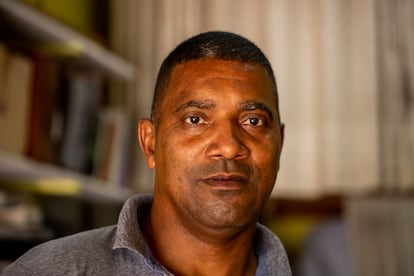
In the end, it was art — especially Emicida’s raps — that helped him rediscover his Blackness. The posters he puts up in the streets seek to extend the same awareness to others, with slogans such as “if the book doesn’t say it, what color do you give the characters?”
Artist and photographer Angélica Dass, 44, defines herself as Black. She grew up in “a very colorful family” in Rio de Janeiro and has lived in Spain for many years. Her most famous project is Humanae, a collection of 4,000 portraits taken in 20 countries. Each one is matched to their exact skin tone on the Pantone color scale. She says that living outside of Brazil gave her the distance necessary to reflect: “There are people who are treated as less human because of the color of their skin… they have fewer rights because of their amount of melanin,” she laments, in a telephone interview with EL PAÍS. She feels that both she and Humanae “are the fruit of ancestors who were [both] oppressed and oppressors.”
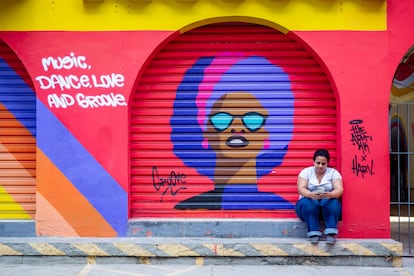
Among her projects, Dass chooses 280 chibatadas (in English: 280 lashes) as the one that best reflects her native country. In the work, she combines images of a happy childhood in a multiracial family with a series of racist tweets. She also includes a survey carried out in 1988 by the University of São Paulo, which concluded: “96% [of Brazilians] affirm that there are no racial prejudices; 99% know someone who has them.” Excellent raw material for reflection and debate.
Sign up for our weekly newsletter to get more English-language news coverage from EL PAÍS USA Edition
